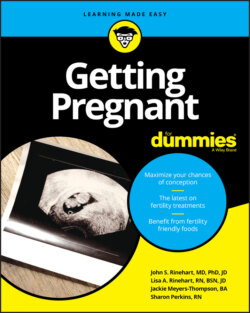Читать книгу Getting Pregnant For Dummies - Sharon Perkins - Страница 72
Spotting single gene defects
ОглавлениеA second type of genetic testing can determine if a gene is abnormal. There may be a single nucleotide error, pieces of the gene may be missing or duplicated, or there may be other errors. The advent of next-generation sequencing has permitted easy, cost-effective testing for these errors. Genetic diseases may require that both chromosomes have the same defective gene. These diseases are called recessive. A person may have one defective gene, but the other normal gene compensates for the defective gene. Some genetic diseases require that only one chromosome have the gene defect, and these are call dominant gene diseases. One use of next-gen sequencing is for a family that has a history of a genetic disease. A person, who does not have the genetic disease or an embryo, can be tested for that disease. Since a person receives a chromosome from each parent, there is a double dose of each gene. The person who has a single gene defect is called a carrier for that gene, and the vast majority of these mutations are of the recessive type (requiring both sets of chromosomes to have the gene defect before the disease develops).
Suppose that the gene that is responsible for cystic fibrosis is faulty in the chromosome from one parent but normal in the other. Then the normal gene compensates for the malfunction of the other gene, and the person does not develop cystic fibrosis. The child of these parents may have one abnormal gene and one normal gene and is called a carrier for that gene defect. Sometimes, having one defective gene results in a disease. An example of this is Huntington’s chorea (a dominant gene disease), a devastating neurologic disease that does not show up until later in life after the person has reproduced. Huntington’s chorea is caused by a gene defect in which too many of the codons exist — similar to the type of problem in fragile X syndrome. The genetic defect for Huntington’s and fragile X is not due to an error in the code but rather to too much code. For families with a family history of Huntington’s, it is now possible to test embryos and elect not to transfer an embryo that has the defect.
A popular test now is called carrier screening. Many people carry a number of gene defects for recessive diseases. For a recessive disease to produce the actual disease, a person has to inherit an abnormal gene form both parents. Thus, many people have unknown gene errors and are disease free, but could have children that develop the genetic disease if the partner also has the gene defect. The advances in genetic testing now permit testing people for many gene defects. Knowing this, a couple can determine whether their children would be at risk for developing the disease. Using IVF and preimplantation genetic diagnosis, the couple can avoid creating a child with the disease.
